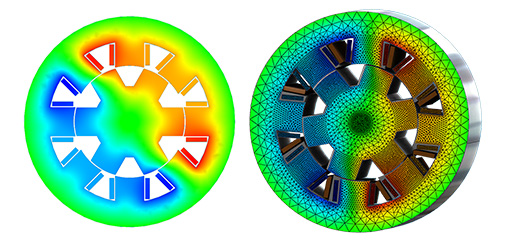
The switched reluctance motor (SRM) has various benefits such as a simple and robust structure, high speed operating capabilities, and lower manufacturing costs. It has a high tolerance to fault due to the magnetic independence of all the phases and therefore provides a high degree of reliability in electric drive applications. The major advantage of the SRM is the absence of permanent magnets (PMs) or conductors on the rotor core. It simply consists of the laminated steel salient pole type structure of the stator and rotor core with smaller end turn windings. The SRM offers further advantages; the absence of back EMF and cogging torque facilitates efficient constant power operation above its base speed. The SRM offers great advantages over other electric motor topologies, however, low torque density and the need for a non-standard drive strategy and converter are its limitations. Nevertheless, to avoid the dependence on rare-earth metals and by using advanced drive control techniques, SRM can be explored as the future of electric vehicles (EVs).
In this webinar, we will demonstrate how to build and simulate a switched reluctance motor using our electromagnetic simulation software tools – EMWorks2D and MotorWizard. A four-phase, 8/6 pole, 20 kW SRM will be investigated and its key electromagnetic results such as the flux linkage vs rotor position, inductance vs rotor position, flux plot, torque, energy, etc. will be analyzed. In addition, we will also obtain its efficiency and thermal performance.

